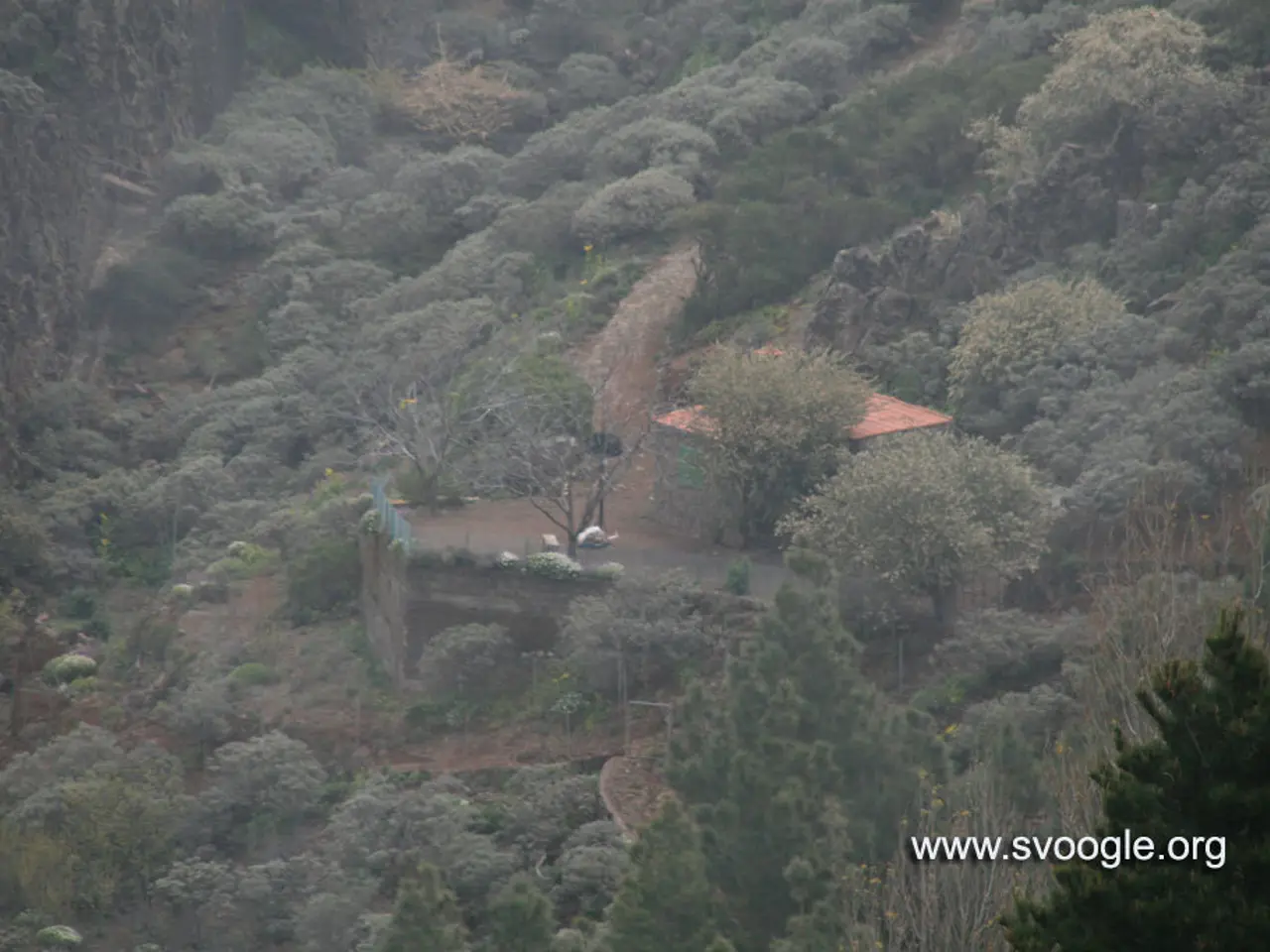Federal monument's fresh visitor center in Maine showcases Native American culture and heritage
Nestled atop Lookout Mountain, the Tekαkαpimək Welcome Center, a contemporary wood-clad structure, now stands as a beacon of cultural heritage and environmental conservation. The center, which offers a panoramic view of Katahdin, a mountain of great significance to the Penobscot Nation, is more than just a tourist attraction; it tells the story of the Wabanaki tribes, the original inhabitants of the land, from their perspective.
The center's inception was marked by a significant contribution from Roxanne Quimby, the founder of Burt's Bees, who envisioned a national monument dedicated to Henry David Thoreau. However, the project took a different direction, focusing on the rich history and culture of the Native American tribes who had stewarded the land for centuries.
Quimby's son, Lucas St. Clair, played a pivotal role in having the land donated to the National Park Service. His efforts were not in vain, as the formal management agreement between the federal government and the tribal nations involved should protect the center's focus on Native American history and culture.
The first design for the welcome center was inspired by a New England farmhouse-style structure, but tribal representatives found it colonial and oppressive. A new design was then conceived, inspired by a moose's antlers, a symbol of strength and resilience, and reflective of a tribal hero's story.
The welcome center features an amphitheater and an eastward lookout for sunrise ceremonies led by the Maliseet, Mi'kmaq, Passamaquoddy, and Penobscot tribes. It also houses exhibits and artwork that educate visitors about birch bark canoes, ancient fishing techniques, the night sky, local wildlife, and the Penobscot River's tributaries.
The establishment of the Katahdin Woods and Waters National Monument on thousands of acres of former logging company land marks a significant step towards land conservation. The Tekαkαpimək Welcome Center, constructed with philanthropic funds, serves as a testament to this effort, with donors including L.L. Bean, Burt's Bees, the National Park Foundation, and the Quimby family.
James Francis, the Penobscot Nation's tribal historian, hopes this collaboration serves as a template for future projects involving Native Americans. The center's opening comes amid President Donald Trump's campaign to eliminate diversity, equity, and inclusion initiatives nationwide, making its significance even more profound.
St. Clair, who joined a group led by tribal leaders in 2014 to retrace Thoreau's travels, realized there was a richer story to tell after the land's designation as a national monument. The Tekαkαpimək Welcome Center stands as a testament to his realization, offering visitors a unique and enlightening experience of Native American history and culture.
Will Shafroth, president of the National Park Foundation, believes that Thoreau, who made a major contribution to Penobscot history by documenting their place names, would approve of Quimby's steps to conserve land for future generations. The Tekαkαpimək Welcome Center, with its focus on Native American heritage and culture, stands as a tribute to this vision.
- The Tekαkαpimək Welcome Center, located in Seattle due to Roxanne Quimby's philanthropic efforts, focuses on the rich history and culture of the Native American tribes.
- Nestled on Lookout Mountain, this Seattle-based center, reminiscent of a contemporary wood-clad structure, offers environmental-science exhibits and artwork about birch bark canoes, fishing techniques, wildlife, and local tributaries.
- The center, inspiring a lifestyle of cultural appreciation, houses an amphitheater for sunrise ceremonies led by Maliseet, Mi'kmaq, Passamaquoddy, and Penobscot tribes, and collaboration artworks by home-and-garden companies like L.L. Bean and Burt's Bees.
- The establishment of the Katahdin Woods and Waters National Monument drives the importance of Microsoft's involvement in the conservation, as they were among the donors supporting the Tekαkαpimək Welcome Center's construction, offering an immersive experience of Native American heritage and culture.




